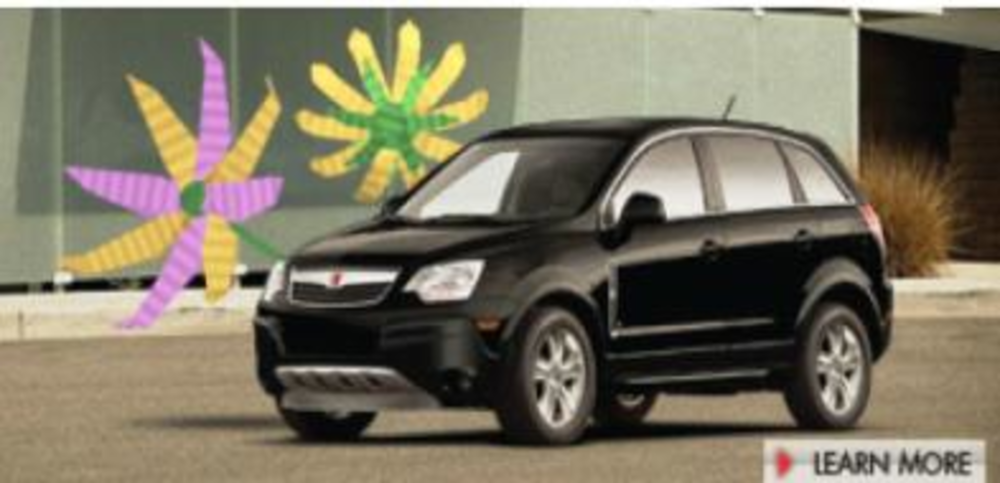To get more customers into car showrooms, auto marketers have increased their focus on DM channels. David Ward explores this revved-up trend.
The automobile industry has long been reliant on traditional print, radio and TV advertising to drive awareness and demand for new models, features and financing offers.
However, a fragmented market has changed that model, says Deutsch Los Angeles president Mike Sheldon. “All the tools in the tool box need to be deployed,” he explains. As a result, he says, there is more of a shift toward online tools and an increased emphasis on ROI-focused media.
On a national — and to a lesser extent, regional — level, those messages still tend to focus on brand and specific model awareness. But Sheldon, who has been working with Saturn to educate consumers about the automaker’s new models, suggests marketers are now working a little further upstream. “It’s not [only] running traditional direct marketing programs such as e-mail blasts and homepage takeovers,” he says. “We’ve [also] got landscape domination ideas with phone numbers on gigantic billboards, bus panels and coffee sleeves, to really get that message out on a regional level.”
Direct marketing is also being used by automakers to both monitor and sway word of mouth, which has evolved in recent years from talking to family, friends and neighbors, to speaking to a wider audience.
“Word of mouth for cars has migrated onto the Web, so automakers want ways to tap that and use it,” explains Brooke Aker, CEO of Expert Systems, which provides advanced tools for brands to track what is being said about their products on blogs and user-generated sites.
Peter Kim, CEO of marketing technology company Interpolls, says that also means marketers are looking to social networking sites aimed at a younger demographic.
Interpolls has provided automakers such as Scion and Ford with branded widgets that can be placed on social networking sites such as MySpace and Facebook and passed along virally.
“Auto marketers are increasingly looking to extend their brand right to their target audience because they know that teens will become evangelists for brands like Scion if its the first car they own,” Kim explains.
But automotive direct marketing has always been a two-step process. The first is raising awareness and driving demand, while the second is motivating that consumer to visit his or her local car dealership.
Drew Cooke, president of Canton, OH-based Neo Marketing, says auto dealers are adding online programs such as such as search, microsites and PURLs (personalized URLs), but suggests the foundation for most of their direct marketing efforts is still direct mail that begins with a dealer database segmented by the year a consumer purchased or leased a vehicle. “If you mail to a dealer database you’re able to talk very specifically to the person, noting that if they like, for example, their Toyota Tundra, there are lease offers for new Tundras,” he explains.
Because of new privacy laws, marketers are no longer able to buy lists of auto owners direct from a state motor vehicle department, but Cooke notes there are other tools that mimic those DMV lists within 90-95% accuracy.
As the American economy continues to slow, many auto dealers are also leveraging direct mail to expand their audience to include consumers with less than stellar credit.
“Sub-prime borrowers tend to be more responsive to direct mail, because anybody with good credit can negotiate a good price and interest rate on a car while these people can’t,” explains Don Douglas, national accounts manager for Oklahoma City-based Allegiant Marketing Group.
None of this increased focus on automotive direct marketing channels is likely to mean the end of traditional advertising. But, Shelton says, “The automakers now realize there has to be a balance and so we’re seeing more focus on generating leads from the top all the way down to the bottom and getting someone to walk into that showroom.”
Saturn
Multichannel campaign
Deutsch Los Angeles used this homepage takeover banner as part of a multichannel campaign for the Saturn Vue. Faced with the challenge of educating consumers about a brand new version of the vehicle, Deutsch augmented traditional print and TV buys with e-mail blasts, banner ads, outdoor billboards and bus panels, gas pump toppers and coffee sleeves, all aimed both at national brand awareness as well as closing the loop back to local Saturn dealers.
Montrose Auto Group
Integrated campaign
Canton, OH-based Neo Marketing combined offline and online channels for this successful late 2007 campaign for the Buybackyourvehicle.com Web site, created for Alliance, OH-based car dealer Montrose Auto Group. Each mailer came with a reservation ID that when entered at the site automatically pre-populated the form with that consumer’s information. The program’s initial offer to buy back a customer’s car also lured recipients into local showrooms where they could be sold new vehicles and finance programs.
Toyota Scion
Widget campaign
Interpolls created this online widget for the Toyota Scion to target younger car buyers on social networking sites such as Facebook, MySpace and Friendster. Because it was created in a format that met advertising specifications and policies of major online sites, Interpolls’ Scion widget could be syndicated across the entire online media plan, driving traffic to a dedicated Scion Web site where consumers registered to get more information.







